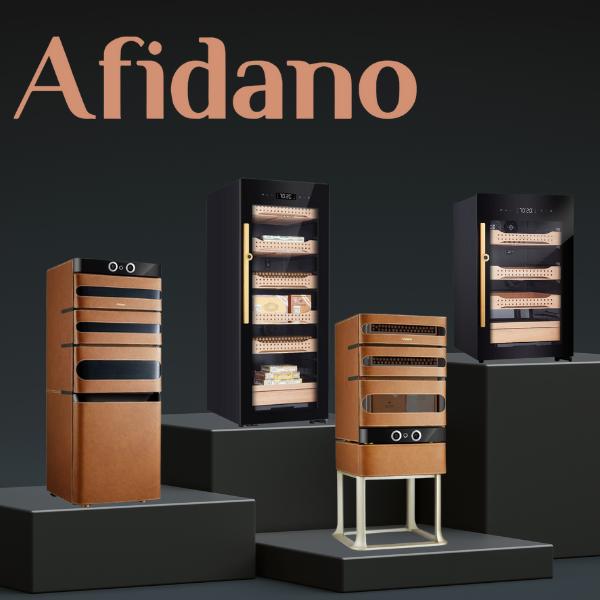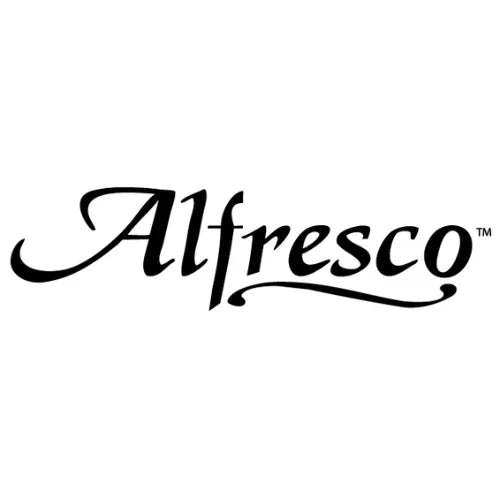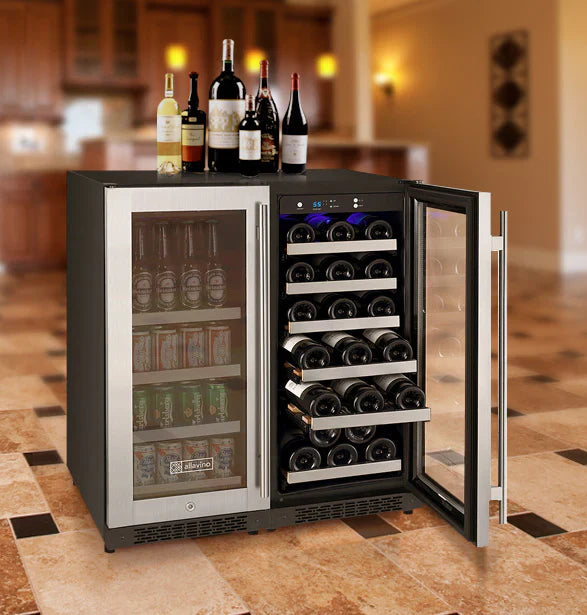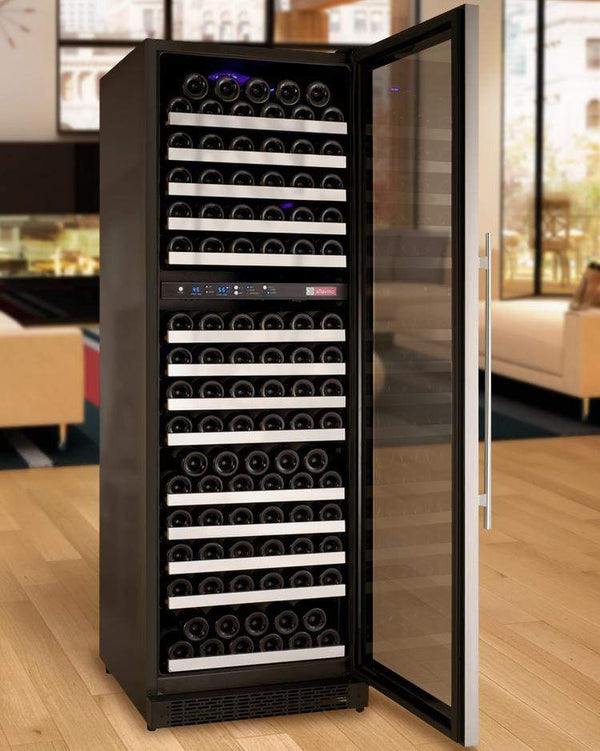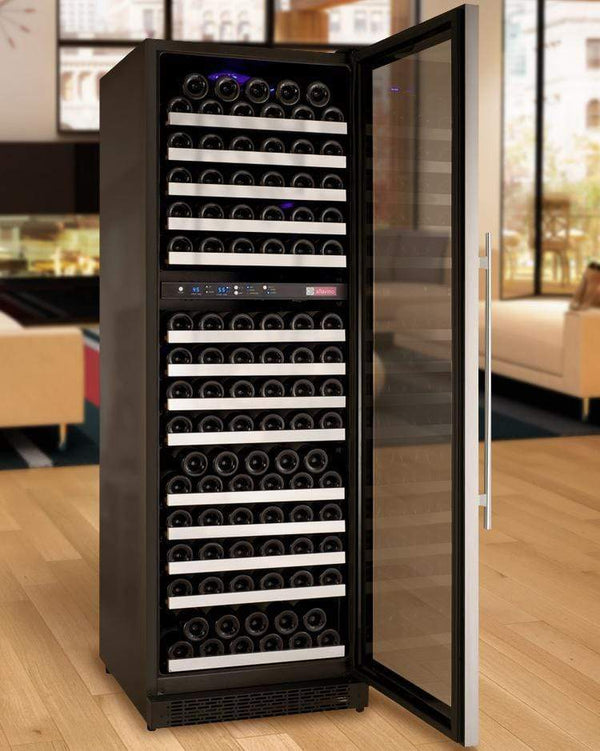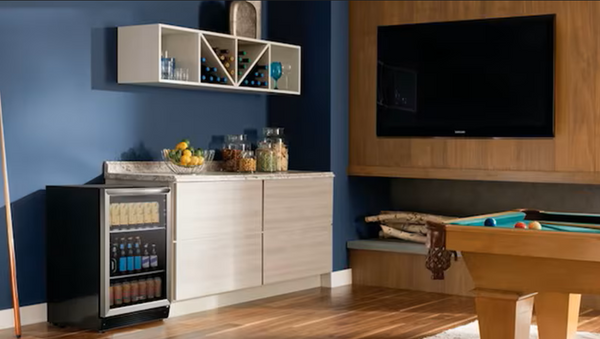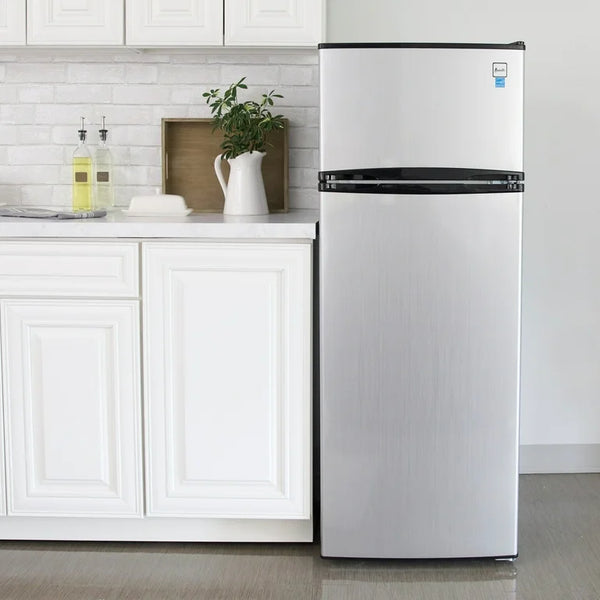Correct Temperature When Serving Wine: Expert Tips & Chart
Optimal Wine Serving Temperature: A Comprehensive Guide
By Jim Hopper, Wine Cooling Expert
Wine is a sophisticated and delicate creation. The temperature at which it’s served can dramatically affect its aroma, flavor, and overall enjoyment. Through centuries of refinement, experts have discovered that serving wine at the proper temperature brings out the best in every bottle.
If you want a complete overview of both cooling and serving wine, check out our Wine Cooling and Serving Guide for more tips and product recommendations.
Almost all wine experts agree: the temperature for storing wine is not the same as the ideal temperature for serving wine. That’s why a wine cooler or wine refrigerator is essential for anyone who wants to preserve and serve wine at its best.
This guide will help you master wine serving temperatures, so every glass you pour is as enjoyable as the winemaker intended.
Why Does Serving Temperature Matter?

Temperature is one of the most important factors in enjoying wine. When served at the correct temperature, wine reveals its full spectrum of aromas and flavors. Serve it too cold, and the wine may taste muted and one-dimensional. Serve it too warm, and it can taste flat, overly alcoholic, or lose its freshness.
- Aroma: Cooler temperatures can mute delicate aromas, while warmer temperatures can release too much alcohol vapor, overpowering subtle scents.
- Flavor: The right temperature balances sweetness, acidity, and tannins. Whites served too warm may taste flabby, while reds served too cold can seem thin or harsh.
- Texture: Proper temperature brings out the wine’s intended mouthfeel—from the crispness of a Sauvignon Blanc to the velvetiness of a Merlot.
Tip: Think of wine like a symphony—temperature is the conductor that brings harmony to each note.
Quick Reference: Ideal Serving Temperatures for Wine
Here’s a handy chart for the recommended serving temperatures for different wine styles:
| Wine Type | Temperature Range | Notes |
|---|---|---|
| Sparkling Wines | 40–46°F (4–8°C) | Keeps bubbles lively and flavors crisp |
| Light-Bodied White Wines | 44–50°F (7–10°C) | Preserves acidity and fresh fruit notes |
| Full-Bodied White Wines | 50–55°F (10–13°C) | Enhances complexity and layered aromas |
| Rosé Wines | 45–55°F (7–13°C) | Refreshing, preserves aromatic character |
| Light-Bodied Red Wines | 55–60°F (13–16°C) | Shows off delicate fruit and freshness |
| Medium-Bodied Red Wines | 60–65°F (16–18°C) | Balances richness and structure |
| Full-Bodied Red Wines | 63–68°F (17–20°C) | Accentuates bold flavors and tannins |
| Dessert & Fortified Wines | 50–65°F (10–18°C) | Depends on style; sweeter = cooler |
Detailed Serving Temperatures by Wine Style
Light Dry White Wines, Rosés, and Sparkling Wines
These wines are all about freshness and vibrant fruit. Serving them cold preserves their acidity and crispness.
- Recommended Temperature: 40°F to 50°F (4°C to 10°C)
- Time in Fridge: 1.5 to 2 hours before serving
- Examples: Sauvignon Blanc, Pinot Grigio, Prosecco, Champagne, Rosé
Tip: The lighter the color and style, the colder it should be served.
Want to get the most out of your bubbly? Discover more tips in our guide on the best temperature for Champagne.
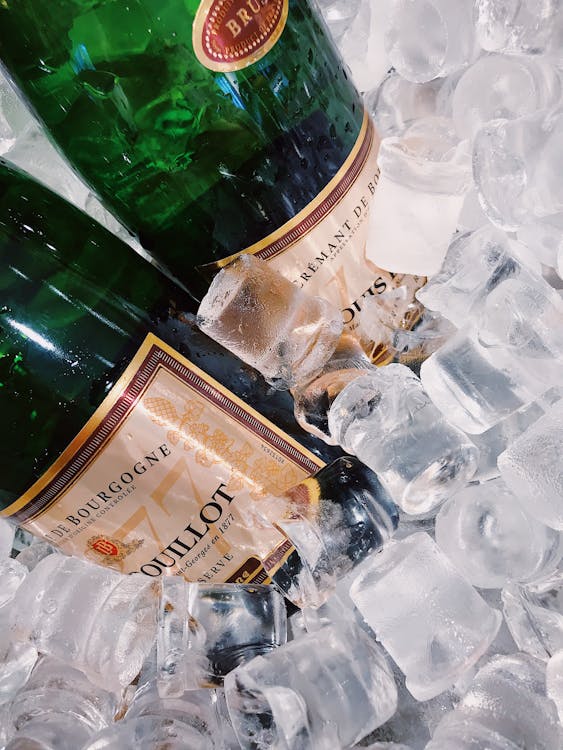
Full-Bodied White Wines
Full-bodied whites like Chardonnay or Viognier benefit from being served slightly warmer than lighter whites. This allows their complex flavors and aromas to shine.
- Recommended Temperature: 50°F to 55°F (10°C to 13°C)
- Time in Fridge: 1 hour before serving
Light Fruity Red Wines
Lighter red wines such as Pinot Noir and Gamay show their best when slightly chilled. This accentuates their fruit and keeps them refreshing.
- Recommended Temperature: 55°F to 60°F (13°C to 16°C)
- Time in Fridge: 30–45 minutes before serving
Medium- and Full-Bodied Red Wines
Bolder reds like Merlot, Syrah, Cabernet Sauvignon, and Malbec are best just below modern room temperature. This range balances their structure and softens tannins.
- Recommended Temperature: 60°F to 68°F (16°C to 20°C)
- Time in Fridge: 15–30 minutes before serving
Note: Serving reds too warm can emphasize alcohol and make the wine taste flat.
Dessert and Fortified Wines
These wines vary by style, but most are best served cooler than full-bodied reds.
- Sweet Dessert Wines: 45°F to 50°F (7°C to 10°C)
- Port and Sherry: 55°F to 65°F (13°C to 18°C)
- Ice Wine: 50°F (10°C)
The Myth of Room Temperature

Many believe red wine should be served at “room temperature,” but this advice dates back to when room temperature was 60–65°F (16–18°C) in drafty old European cellars. Today, most homes are warmer—often 70–75°F (21–24°C)—which is too warm for most reds.
Modern Rule: Serve reds slightly cooler than your living room. Use a wine thermometer to check, or chill reds in the fridge for 15–30 minutes before pouring.
Common Misconceptions About Wine Temperature
Despite growing wine knowledge, several myths about serving temperature persist. Here are a few of the most common, and the facts behind them:
-
Myth: Red wine should always be served at ‘room temperature.’
This advice dates back to when “room temperature” meant 60–65°F (16–18°C) in chilly European homes. Today’s rooms are warmer, so serving reds slightly cooler than your living room is ideal. -
Myth: Red wines should never be chilled.
In reality, lighter reds like Pinot Noir or Gamay often taste best with a slight chill. Serving these at 55–60°F (13–16°C) enhances their freshness and fruit notes. -
Myth: White wine is always best straight from the fridge.
Standard refrigerators are colder than recommended serving temperatures. Pouring white wine immediately after removing it from the fridge (typically 35–40°F / 2–4°C) can mute aromas and flavors. Letting it warm slightly brings out its complexity. -
Myth: Colder is always better.
Excessively cold wine—whether red, white, or sparkling—can dull aromas and make flavors seem flat or one-dimensional. Conversely, serving wine too hot can accentuate alcohol and make the wine taste unbalanced. -
Myth: You can’t adjust wine temperature after pouring.
If your wine is too cold, let it sit in the glass or cup it in your hands for a few minutes. If it’s too warm, a brief chill in an ice bucket can help.
Understanding and correcting these misconceptions ensures you experience each wine as the winemaker intended.
How Temperature Affects Wine: Real-World Examples

- Too Cold: A Chardonnay straight from the fridge (below 40°F/4°C) will taste bland and lose its creamy texture. A cold Pinot Noir will seem thin, with muted fruit.
- Too Warm: A Cabernet Sauvignon at 75°F (24°C) can taste overly alcoholic and flabby, with muddled flavors.
- Just Right: When served at its ideal temperature, wine reveals layers of aroma, balanced acidity, and a pleasing mouthfeel.
- Too Cold: Aromas are muted, flavors become dull, and whites may taste more like water than wine. Reds can seem thin or even harsh.
- Too Warm: Alcohol becomes overwhelming on the nose and palate, masking the wine’s fruit and structure. Whites may taste heavy and flat, while reds lose their vibrancy and balance.
Practical Tips for Achieving the Perfect Serving Temperature
- Use a Wine Thermometer: This is the most reliable way to ensure your wine is at the right temperature.
- Quick Chill: Place a bottle in an ice bucket with water and a handful of salt for 15–20 minutes. The salt lowers the freezing point, chilling wine faster.
- Wet Paper Towel Method: Wrap the bottle in a damp paper towel and place it in the freezer for 15–20 minutes. (Set a timer to avoid freezing!)
- Decanting: Pouring wine into a decanter can help gently warm a wine that’s too cold, or cool it if the decanter is chilled.
Curious about how decanting can improve both flavor and temperature? Read our full article on the benefits of decanting wine.
- Glassware Matters: Hold glasses by the stem to avoid warming the wine with your hand. Stemless glasses will warm wine more quickly.
- Serve Whites Straight from the Fridge: Whites and sparkling wines can be poured right after taking them out of the fridge.
- Let Reds Breathe: If a red is too cold, let it sit at room temperature for 15–20 minutes, or warm the glass with your hands.
Wine Accessories for Temperature Control
Achieving and maintaining the ideal serving temperature isn’t just about timing—it’s also about using the right accessories. Here are some essential tools that can help you serve wine at its best:
-
Wine Thermometer:
A wine thermometer gives you precise control over serving temperature. Simply insert it into the bottle or glass to ensure your wine is neither too cold nor too warm. -
Wine Aerator:
Aerators introduce air to the wine as you pour, which can help adjust temperature slightly—especially if the wine is a bit cool. Some electric aerators combine aeration with dispensing for added convenience. -
Wine Pourer:
Pourers provide a controlled, drip-free pour and can help minimize temperature fluctuations by reducing the time wine is exposed to the air during serving. -
Wine Bottle Stopper & Vacuum Sealer:
Stoppers help preserve opened bottles, while vacuum sealers remove excess air, helping to maintain both temperature and freshness. Some advanced stoppers are designed for better insulation. -
Wine Chiller or Chilling Stick:
For a quick and portable solution, wine chillers and chilling sticks can cool wine rapidly without watering it down. These are especially handy for outdoor events or picnics. -
Decanter:
While primarily used for aeration, decanters can gently bring a wine to serving temperature—either warming a wine that’s too cold or cooling it if the decanter is pre-chilled.
Looking for a thoughtful gift for a wine enthusiast? Explore our recommendations for the best wine cooling systems to give as gifts.
Choosing the right accessory depends on your wine style, serving environment, and how quickly you need to adjust the temperature. For example, chilling sticks are great for picnics, while a wine fridge is ideal for home entertaining.

Storing and Serving Wine: Best Practices
- Invest in a Wine Refrigerator or Cooler: This keeps your collection at the perfect temperature for both storage and serving. See our wine coolers for options.
If you’re just starting your wine storage journey, check out our beginner’s guide to wine cellar cooling units for expert advice.
- Avoid Extreme Temperatures: Serving wine too warm can ruin its bouquet and overpower the palate. Too cold, and you’ll lose acidity, fruit, and sweetness.
- Use a Wine Decanter: Decanting is great for both aeration and gentle temperature adjustment.
- Consider Your Glassware: Narrow glasses help keep whites cool. Wider glasses allow reds to breathe and develop.
Wondering if you should stock up on your favorite bottles? Find out why many collectors buy multiple bottles of the same wine.
Choosing the Right Wine Cooler
If you’re ready to elevate your wine experience, a dedicated wine cooler is a smart investment. With options for every space and collection size—single-zone, dual-zone, freestanding, or built-in—you’ll always have wine at the perfect temperature. Explore our top brands: Allavino, Smith & Hanks, Summit, and Sunpentown.
Need help choosing? Check out The Ultimate Buyer's Guide For Wine Coolers.
Conclusion
Serving wine at the correct temperature is one of the simplest ways to elevate your wine drinking experience. Use a thermometer, experiment with different methods, and don’t be afraid to adjust based on your preferences. With the right temperature, every bottle can shine.
Enjoy your next glass at its best!
📚 Frequently Asked Questions (FAQs)
At what temperature should wine be served?
What is the ideal temperature for wine making?
What wine should be served at room temperature?
Is wine supposed to be served warm or cold?

Designing or Upgrading a Wine Cellar?
We got you! Here at Wine Coolers Empire, we will guide you in building your dream wine cellar.


